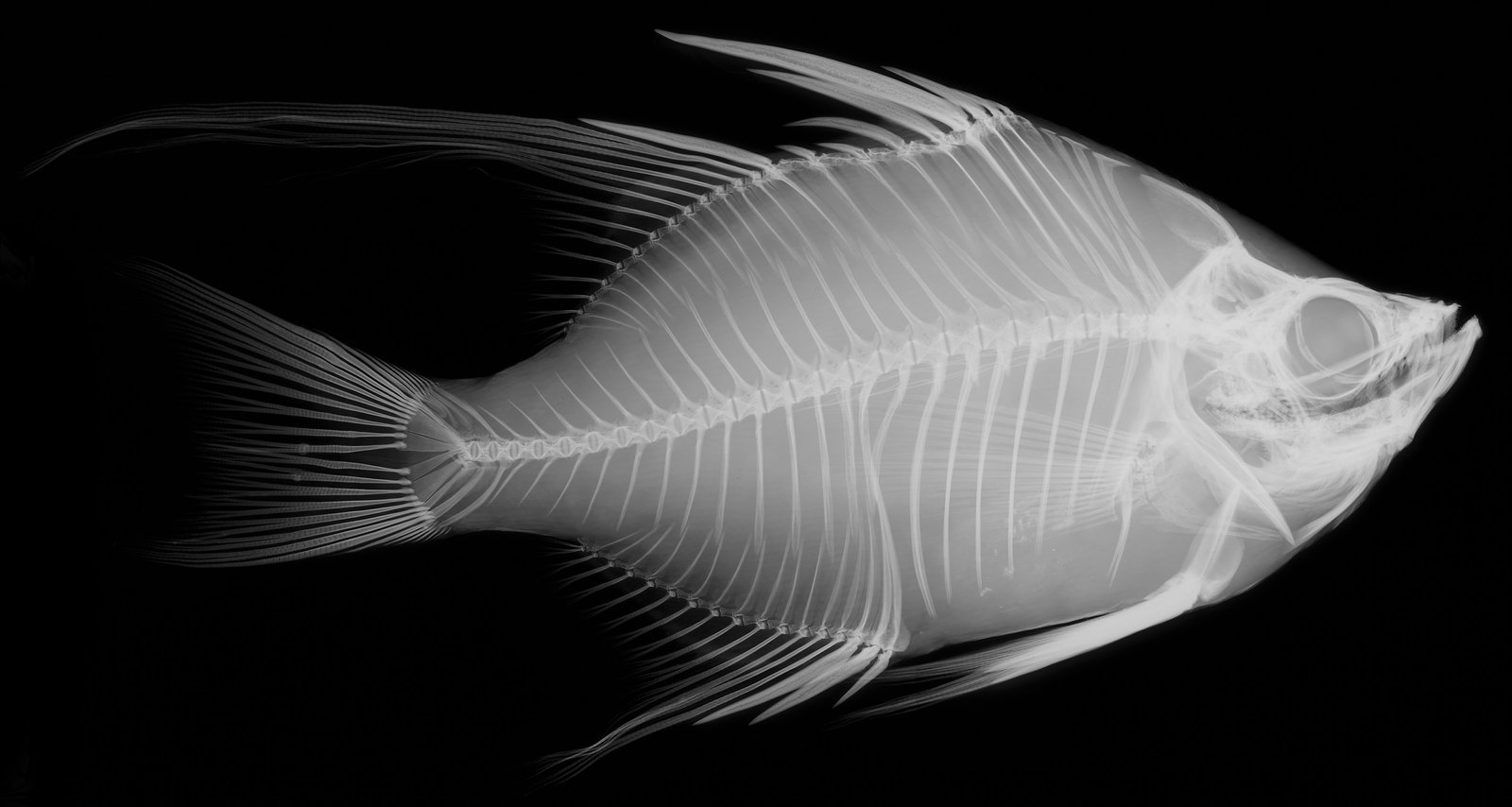Old Wife, Enoplosus armatus (White, 1790)
Introduction
The derogatory standard name of the species apparently refers to the sound made when a fish is caught on hook and line. The teeth are ground together supposedly producing the sound of an 'old wife'.
Identification
The Old Wife is easily recognised by its distinctive shape and colouration. It has a deep body, and two separate dorsal fins, the second being sickle-like.
The body is silver-white to brown and has six to eight black bands of variable width.
Juveniles are more elongate than adults and have a blotched colour pattern and a white-rimmed spot on the soft dorsal fin.
The Old Wife was given its rather derogatory name in reference to the sound it makes by grinding its teeth after it is caught.
Enoplosus armatus is the only species in the family Enoplosidae.

A juvenile Old Wife caught near Ulladulla, New South Wales, March 2010.
Image: Mark McGrouther© Australian Museum
Habitat
Adults are common on coastal reefs, often seen as solitary individuals or in pairs, but will also form large schools. Juveniles live in estuaries. Regular website contributor David Muirhead however, reported that "in South Australian waters juveniles are not commonly seen in estuaries, being more common in shallow sub-tidal, low to moderate energy inshore areas including rocky reefs and seagrass beds”.

X-ray image of an Old Wife from the Australian Museum fish collection (AMS I.19602-005).
Image: J. King© Australian Museum
Distribution
The Old Wife is endemic to Australia. It is found in southern waters from southern Queensland to south-western Western Australia.
The map below shows the Australian distribution of the species based on public sightings and specimens in Australian Museums. Click on the map for detailed information. Source: Atlas of Living Australia.
Feeding and diet
The species is carnivorous, eating primarily crustaceans and worms.
Other behaviours and adaptations
The dorsal fin spines of the Old Wife contain a venom which can cause severe pain.
References
- Glover, C.J.M. in Gomon, M.F., C.J.M. Glover & R.H. Kuiter (Eds). 1994. The Fishes of Australia's South Coast. State Print, Adelaide. Pp. 992.
- Gomon, M.F., Bray, D. & R.H. Kuiter (Eds). 2008. The Fishes of Australia's Southern Coast. Reed New Holland. Pp. 928.
- Hutchins, B. & R. Swainston. 1986. Sea Fishes of Southern Australia. Complete Field Guide for Anglers and Divers. Swainston Publishing. Pp. 180.
- Kuiter, R.H. 1993. Coastal Fishes of South-Eastern Australia. Crawford House Press. Pp. 437.
- Kuiter, R.H. 1996. Guide to Sea Fishes of Australia. New Holland. Pp. 433.


